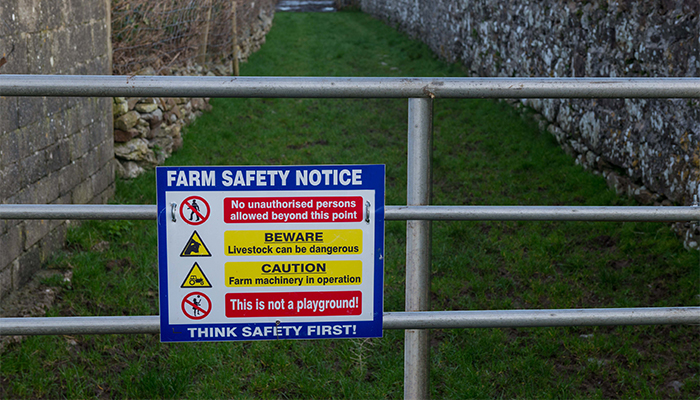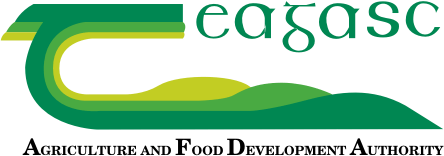27 June 2024
Safety during Busy Times on the Farm

The summer is some of the busiest times on Irish farms with many essential activities taking place. Children are on holidays from school and may be out and about on farms. Martina Donnelly discusses ways to stay safe during this busy time.
It is important that we all remain vigilant while working on the farm over the summer months. Statistics from the Health and Safety Authority (HSA) show that over 90% of farm fatalities involving children had a farm vehicle or machine involved. Young children should not be allowed near tractors or farm vehicles. Make plans to ensure that children always have adult supervision when on the farm. Even stationary tractors, farm vehicles and machinery pose a high risk due to sharp edges, moving machinery parts and the possibility of falls from the machine.
One of the big events over the summer is silage making and safety should be to the fore during this time. The days are long and often we have a short window to getting silage preserved. This can put extra pressure on farmers, contractors and fatigue can be a big risk factor. It is important to engage with your contractor and proactively work with them in relation to planning work on your farm. Contractors are very aware of the impact of long working hours on their driver’s and their ability to manage machines in a safe way. Take time to prepare for their arrival. Tidy yards, keep hedges trimmed at gateways, ensure there are no animals in sheds during slurry agitation. These are some ways of making your farm safer for your contractor.
A significant proportion of silage is now made as bales and the HSA report that 5% of farm workplace deaths are the results of falling bales. When working with bales, ensure that the driver is aware of the ground conditions such as slopes and are aware of any overhead power lines.
If on the road transporting bales drivers must ensure that they have a clear view ahead. Inappropriate use of front loaders can dramatically reduce visibility and stability. It is recommended to have two or more spikes in a bale to prevent rotation or loosening of the bale during transport. When travelling on the road without a bale the bale spikes should be removed, covered or folded back so as not to pose a risk to road users. Accidents with bales can also occur when they are inappropriately stacked. The HSA state the maximum height of for stacking silage bales should be 3 bales high. Where the bales are not very dense the maximum height of two bales is advised.
Where stacking is necessary, stack them on their curved sides. Stacking of round bales on their ends is not recommended as bales may lean sideways if they settle during storage. Bales can be placed on their ends in a single layer on the ground provided the ground is level.
When dealing with livestock over the summer make safety the priority. All animals can be unpredictable so regardless of how ‘quiet’ an animal may seem care needs to be taken. It is important that time is taken to think before each animal handling task. Plan the task and carry out necessary preparatory work to avoid dangerous situations arising. Planning and preparation will help to better manage animal behaviour, secure handling equipment and avoid high-risk activity. Always cull dangerous animals, plan an escape route from fields and pens and keep a physical barrier between you and the cow during calving/dehorning.
The Targeted Agricultural Modernisation schemes (TAMS III) grants offer 60% grant aid for certain safety equipment through the Farm Safety Capital Investment Scheme, (FSCIS). Tranche 4 is now open and will close for applications on 6th September. This scheme provides incentives to invest in equipment that would help improve safety on the farm. Grant aid under the scheme will be paid at a rate of 60% up to a maximum of €90,000.
Talk to your Advisor about the possibilities for your farm under this scheme and stay safe during this busy summer time. See the list below for eligible items.
Items that are eligible for grant aid under TAMS III
Calving pen
Bull pen
Unroofed fixed cattle crushes/races
Unroofed enclosures
Mobile sheep handling equipment
Fixed sheep handling equipment
Electronic tag readers
Mobile cattle handling unit
Head scoop
Leg hoist lifter
Cattle weighing scales
Protective fence around existing tank
Safety agitation platform for existing external tanks
New tank cover over existing open tank
Replacement tank extension cover
Replacement of damaged slats or removal of existing internal
agitation point and replacement by gang slats
Tank extension to provide external agitation point
Circulation pipe (6″) to allow for agitation of slurry
Simple aeration systems
Calving gate in existing house
Replacement of a hinged door/sheeted gate with a new sliding
door/roller door on agricultural buildings
Safety rails on silo wall
Retrofitting roof-light with safety cages
Wiring/rewiring existing agricultural building
Yard lights (LED equivalent to min 200W halogen
Calf dehorning crate
Horse handling facilities
Wheel changing equipment
Hydraulic motor to substitute PTO shaft
Livestock monitors
Bale slice
